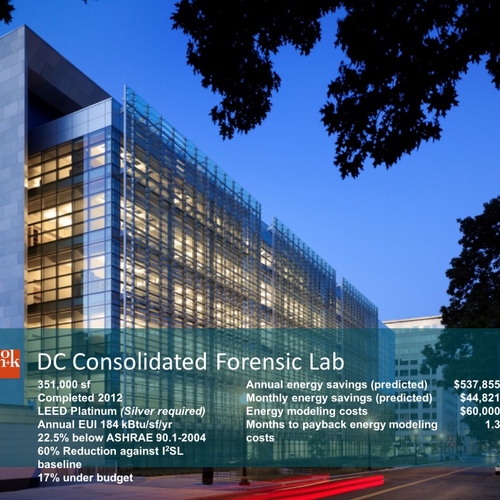Image Credit: Image #1: Wikimedia Commons
Image Credit: Image #1: Wikimedia Commons A ceiling with problems. The insulation on the original, higher ceiling is doing nothing because it's not in the right place (in addition to being inadequate in amount). A trained auditor can look at a home like this and know what to do without resorting to energy modeling.
Image Credit: Image #2: Energy Vanguard
Energy modeling has gotten a bad reputation in the home performance world. One conference I’ve attended has gone so far as to say that it’s “outside the sandbox” of topics presenters can cover. They want to see data, not modeled results. And they have good reason for that.
The two kinds of physicists
Coming from the world of physics, I have a different perspective. (OK, I had a different perspective even before the book Asimov on Physics opened my eyes to the beauty of the universe when I was 17.)
In physics, modeling is essential. In fact, if you go to any physics department, you’ll find one of the two kinds of people: those who can extrapolate from incomplete data.
But there’s another two kinds as well: the theorists and the experimentalists. They need each other.
Without experimentalists, theorists would go completely off the deep end. (Some say they have with string theory.) Think of Aristotle here, with his peripatetic scholars relying only on logic to find explanations for physical phenomena and never bothering to test their ideas. It took nearly 2000 years for Galileo to usher in the era of modern science by rolling balls down inclined planes.
The harmony of modeling and data
Albert Einstein was the consummate theorist. He developed the special theory of relativity by imagining what it would be like to move along with a beam of light at the same speed the light was traveling. That was his idea of doing an experiment, and it even has a name: Gedankenexperiment, which means thought experiment in German.
Einstein’s general theory of relativity was his expansion of special relativity. He published it in 1915, and that’s when the idea of the curvature of space-time was born. An important fact about this theoretical paper was that he based it on the available data. For example, it explained an anomaly in the orbit of Mercury.
It also was testable. Four years later, Eddington confirmed the curvature predictions when he found a deflection of starlight around the Sun during an eclipse.
On the other hand, he considered the “biggest blunder” of his life to be the introduction of an unnecessary “cosmological constant” simply to conform to the prevailing idea of a static universe. Had he believed his equations instead, he could have hypothesized the expanding universe 14 years before Hubble discovered it.
That’s how science works. Ideas get thrown out there. They get tested by experiments. One negative result can disprove a hypothesis. No amount of data can ever fully prove it, but the more data you have, the more confident you can be in the validity of the idea.
The problem with energy modeling
Now, physics is a science. Home energy retrofits rely on science but are not science themselves. The late Phil Jeffers, an occasional commenter here, used to complain about turning home energy audits and retrofits into science projects. He had a good point.
It’s easy to go too far with modeling, and Michael Blasnik has exposed the flaws with energy modeling. He’s looked at program results in Minneapolis, Oregon, California, and other places and found that most modeling overpredicts the savings, sometimes unrealistically so. No matter how good a home performance contractor is, for example, they’re never going to cut someone’s energy bills by 125%. (You can download the pdf file of his 2013 Building Science Summer Camp presentation, Lies, Damned Lies, and Modeling.)
Likewise, John Proctor recently said, “We don’t need an energy model to tell us that an uninsulated house needs to be insulated and a leaky house needs to be sealed. Just fix it!”
Is modeling useful?
Joe Lstiburek has also been critical of modeling over the past few years, especially hygrothermal modeling with tools like WUFI. His company, Building Science Corporation, does WUFI analyses, and he’s open about when it should be done and when it shouldn’t. “I’m hoping two-thirds of the modeling that’s being done now won’t need to be done,” said Lstiburek at the 2013 BSC Experts Session, “and the modeling that’s needed is done correctly.”
Lstiburek was talking about hygrothermal modeling, mainly for new construction projects with assemblies that don’t have much of a track record. Think R-40 truss walls and R-60 insulated rooflines. Doing some modeling ahead of time can help avoid costly mistakes.
Jeffers, Blasnik, and Proctor were talking mainly about existing homes. The problems are usually obvious, as in the photo below, and we’ve got several decades of experience in weatherization and home performance contracting to help guide us in fixing them.
The problem comes in with programs that require modeling so the program sponsor can justify the expenditures. We could spend a long time discussing this issue and how to fix it, but this article has already gone on far longer than I had intended and is threatening to suck up the rest of my day the way a black hole sucks up everything, including light, that gets too close. (By the way, black holes are another cool thing that came out of Einstein’s general relativity!)
So let me conclude by going back to the title and saying that modeling is not a four-letter word. We need modeling. And we need real data from monitoring projects. We also need to keep it all in perspective and keep the focus on the results.
Here’s another perspective: What good would physics be without modeling?
Allison Bailes of Decatur, Georgia, is a speaker, writer, energy consultant, RESNET-certified trainer, and the author of the Energy Vanguard Blog. Check out his in-depth course, Mastering Building Science at Heatspring Learning Institute, and follow him on Twitter at @EnergyVanguard.
Weekly Newsletter
Get building science and energy efficiency advice, plus special offers, in your inbox.
















0 Comments
Log in or create an account to post a comment.
Sign up Log in